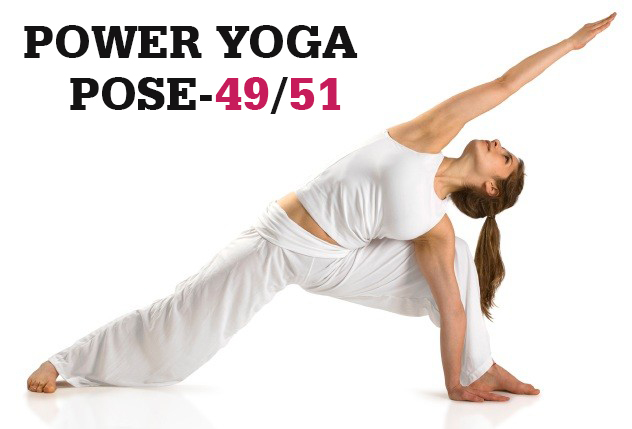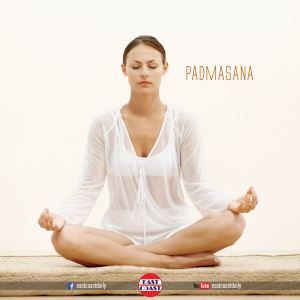
Padmasana – The Lotus Pose for Meditation
Padmasana or the Lotus Pose is an important meditative asana and is mentioned in most yogic texts. In Sanskrit, ‘Padma’ means lotus and ‘Asana’ means pose. This is the forty-ninth Power Yoga Pose. Padmasana is mentioned in the yogic text Hatha Yoga Pradeepika, as one of the main asanas for meditation that can destroy all diseases. The hand mudras may vary, but the legs are always shown seated in the lotus pose. Padmasana is considered one of the best poses for meditation. In Padmasana, the legs are locked together and the lower body is absolutely stable. Also, the back and spine will be straight. This is perfect for long periods of meditation as the body can be held motionless, with least distractions.

How to do Padmasana (Lotus Pose)?
- Sit on the floor comfortably. Assume the simple cross-legged pose where the legs are folded.
- Lift the left leg and place it on the right thigh.
- Now lift the right leg and place it over the left leg. The knees must touch the floor. If it doesn’t, don’t worry. With practice it will, when the legs become flexible.
- Pull and adjust the legs so that soul of the feet face upwards and the heels are tucked in at the waist level near the pelvic bone.
- Now, make the spine straight, broaden your chest (to avoid stooping) and place the hands in the gap between the feet. Place the left palm over the right palm. Relax the muscles in the abdomen and chest. The shoulders should be absolutely relaxed.
- You may close your eyes. Breathe slowly and deeply. Let the awareness be on the breathing process. Experience the perfect balance and alignment of the entire body.
- Maintain this position for as long as comfortable. Those who wish to use this pose for meditation should sit for at least 20 minutes. Slowly increase it so that your duration of meditation too can increase. At some point, the legs may start to pain. Once you have crossed your threshold of pain, slowly release the legs and massage them gently, till the ache is gone. Over a period of time, you will be able to sit for a long duration in this asana. Those who are young will master this asana quickly. It is said that if one can sit in an asana for three and half hours, then one is said to have attained siddhi in that asana. One need not go to such extremes; even 30 minutes to an hour is good enough for most practitioners.
- One of the main points to be noted in meditative asanas is that the body should be absolutely still and relaxed. There should be no pains or stress, otherwise instead of meditating; attention will be drawn to the body and its discomforts. One may use a soft support (soft pillow, cushion, etc.) under the buttocks to achieve the comfort.
- Padmasana can also be done with the left leg over the right leg. In this case, first, the right leg is placed on the left thigh. Then the left leg is placed over the right leg. But traditionally, it is practiced the other way (with right leg over left leg). If you notice statues of Lord Buddha which are excavated from ancient temples, which are over 2000 years old, you will see that the right leg is placed over the left leg.
- It is mentioned that one can gaze at the tip of the nose and keep the tongue touching the roof of the palate (behind the teeth) during meditation in Padmasana. This is supposed to help the prana raise up the spine.
- The position of hands in Padmasana (Lotus Pose)
- Padmasana can also be done with hands resting on the knees. In this case, the elbows are slightly bent and the hands rest on the knees, with palms facing upwards. Chin mudra or Jnana mudra can also be performed with the fingers.
Benefits
- Padmasana is considered one of the best asanas for meditation. The body can be held steady and straight for long durations.
- When there is hardly any distraction from the body, the mind can be made calm. Awareness of the breathing process also helps to steady the mind. The body and mind are intricately connected. A steady body can help to bring steadiness in the mind.
- The spine is kept straight and this helps to channel the energy from the lower spiritual centers or chakras upwards towards Sahasrara chakra. The erect spine aids the free flow of prana along the spinal cord.
- It can tone the sacral nerves as the blood flows to the legs are restricted and redirected to the abdominal region. It may improve digestion too.
- Sitting in Padmasana can relieve many metal and emotional problems.

Post Your Comments